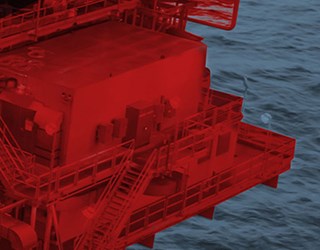NEWS Challenging Myths: Additional Bow Spring Centralizers Increase Drag in Oil and Gas Wellbores
A common myth in the oil and gas industry is the belief that adding more bow spring centralizers per joint in a casing string will inevitably increase drag and increase time to TD. This overlooks several key factors and fails to consider the dynamic interaction between centralizers and the wellbore environment.
Here we explore why additional bow spring centralizers can decrease drag in oil and gas wellbores:
- Optimized Centralization: Bow spring centralizers are designed to centralize the casing within the wellbore, minimizing contact with the wellbore wall and reducing drag. Adding more centralizers per joint allows for improved centralization along the length of the casing string, distributing support evenly and minimizing the risk of buckling or eccentricity. Proper centralization helps maintain hydraulic efficiency and reduces drag by promoting smoother casing movement.
- Enhanced Fluid Flow: Increasing the number of bow spring centralizers per joint can enhance fluid flow around the casing during drilling and cementing operations. The open channels created by the centralizers facilitate the circulation of drilling fluids, promoting hole cleaning, controlling ECDs and improving Mud displacement Efficiency.. Improved fluid flow minimizes drag and allows for more efficient casing advancement, even with additional centralizers in the string.
- Frictional Considerations: While it may seem intuitive to assume that more centralizers equate to increased friction and drag, this overlooks the friction-reducing properties of Centek centralizer designs and materials. The low contact area, advanced coatings and low-friction surfaces on our bow spring centralizers help minimize frictional resistance, allowing for smoother casing movement and reduced drag, even with multiple centralizers deployed.
- Balanced Design: The optimal number and placement of centralizers per joint are determined by factors such as wellbore geometry, casing weight, and operational requirements. A well-designed centralization plan takes into account these variables to ensure balanced support and minimal drag throughout the drilling process. By strategically positioning centralizers and adjusting spacing using our proprietary simulation system, operators can optimize centralization efficiency and mitigate any potential increase in drag.
- Real-World Experience: In practice, operators often find that adding more bow spring centralizers per joint does not necessarily result in a significant increase in drag. On the contrary, proper centralization with additional centralizers can improve operational efficiency, reduce torque requirements, and enhance overall wellbore integrity. Real-world experience and field observations challenge the notion that additional centralizers inherently lead to higher drag in oil and gas wellbores.
Case Study - Spacing programme leads to drag reduction for Conoco Phillips.
In conclusion, the myth that drag will be increased with additional bow spring centralizers per joint in an oil and gas wellbore is not supported by empirical evidence and engineering principles. By optimizing centralization, enhancing fluid flow, considering frictional factors, and relying on real-world experience, operators can improve run in hole with multiple centralizers on the casing string. Ultimately, a well-planned centralization strategy tailored to the specific wellbore conditions is key to minimizing drag and maximizing casing running performance in oil and gas exploration and production.

